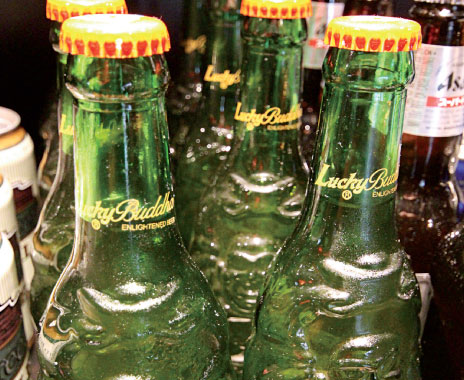When news that more quick-serve and fast-casual restaurants were experimenting with alcohol beverage service emerged in the last decade, many operators and experts followed it with a skepticism chaser. Analysts warned that costly liquor licensing, regulatory details, and staffing issues were just a few hurdles that could offset any potential sales of a few stiff drinks.
The warnings, however, fell on deaf ears. Many concepts leaned in to alcohol service. Chipotle went upscale with hand-shaken Patrón margaritas. Smashburger took a regional approach to craft beer, and Shake Shack incorporated proprietary wine and beer.
“Fast casuals still smell blood in the casual segment,” says Maeve Webster, senior director at Chicago-based menu research firm Datassential. Bar and alcohol service has been one bright spot for casual-dining restaurants in the post-recession economy, Webster says, and with fast casuals wanting to steal more market share from full service, alcohol is one of the ways to do it.
Operators who have taken the plunge concede that serving alcohol isn’t always easy, but is worthwhile.
“Serving alcohol is challenging to all in the fast-casual sector,” says Larry Leith, founder of Tokyo Joe’s, an Asian fast-casual concept with locations in Arizona and Colorado. “You have to jump through a lot of hoops, and it’s a small percentage of sales, so it has to be worth it.”
Historically, alcohol has been all about the sales volume, prompting many limited-service operators to ask, If the sales are not significant, why do it? Leith says an alcoholic beverage program has a unique ability to enhance a consumer’s experience.
“We believe it’s important to the dining experience,” he says. “We’ve pushed the quality of the food so high, it seems fitting to pair beverages with it. I want a beer with sushi, and I think a lot of people do.”
At 800 Degrees Neapolitan Pizzeria, chef Anthony Carron says alcohol service puts the fast-casual chain in the date-spot category and captures more dinner traffic. With one of its units located in downtown Los Angeles, 800 Degrees can draw in diners out on the town for the night. Units in Las Vegas and Pasadena and Santa Monica, California, see similar crowds.
The brand is considering offering classic cocktails in classic glassware, too. But the drinks will still be approachable, Carron adds—and affordable.
At 28-unit Tokyo Joe’s, the menu has included different sake mixed drinks, a Mai Tai, and some wine, but bottled Asian beer is the brand’s sweet spot. The unique offering is such a staple that the restaurants use recycled beer bottles to serve soy sauce at the table, Leith says. The brand’s latest addition to the lineup, Buddha Beer, has been especially popular, he adds.
Chop Daddy’s, a 500-square-foot barbecue concept located in Venice, California, is partnering with Adam Fleischman’s AdVantage Restaurant Partners to open 12 locations in the Los Angeles area over the next four years, and alcohol service will be important to those expansion plans, says CEO Jon Swire.
“We don’t aim to be a bar or a sports bar,” Swire says. “We want to serve beer, wine, cider, and a South Korean soju drink made from distilled ethanol and water because they go great with barbecue and enhance the experience.”
Increased profits are part of Swire’s motivation to offer alcoholic beverages, but not the biggest motivation, he says. The new restaurants will aim to hit the 10–11 percent mark as its total volume.
That’s a reasonable goal, according to industry statistics. Donna Hood Crecca, senior director of the Adult Beverage Resource Group at Chicago-based research firm Technomic, points to other numbers that justify alcohol in the limited-service setting. Recent research showed 42 percent of drinking-age adults order an alcoholic beverage at casual-dining restaurants, while 24 percent do so at fast casual. That looks like a huge discrepancy at first glance, but considering the relatively low numbers of fast-casual chains that offer alcoholic beverages, 24 percent is not too shabby, Crecca says. The numbers are slightly higher among Millennial diners and Hispanics, which are both important segments for less-expensive dinner settings.
“Our surveys also show a high interest level in seeing more fast casuals serving alcohol,” she says. “Anything fast casual does is important because it’s the fastest-growing segment in the industry. It continues to show double-digit growth and outpace the industry overall.”
As alcoholic beverage programs have helped fast casuals blur the lines between segments, some quick-service brands have experimented with wine and beer, too. Starbucks led the charge with its Starbucks Evenings program, in which certain locations offer wine, beer, and small plates after 5 p.m. Datassential’s Webster says it’s possible alcohol sales will pick up at chains like Starbucks and other lunch-based quick serves looking to offer more robust dinner options.
“[Quick service] can handle alcoholic beverages; it’s a mature segment and has the power to put new systems into place,” Webster says. “As with coffee service, there are some operational challenges, and it may not happen overnight, but [fast food] will get there.”






